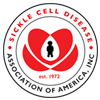Trusted Resources: Evidence & Education
Scientific literature and patient education texts
Reduced fitness and abnormal cardiopulmonary responses to maximal exercise testing in children and young adults with sickle cell anemia
source: Physiological Reports
year: 2015
authors: Liem RI, Reddy M, Pelligra SA, Savant AP, Fernhall B, Rodeghier M, Thompson AA
summary/abstract:Physiologic contributors to reduced exercise capacity in individuals with sickle cell anemia (SCA) are not well understood. The objective of this study was to characterize the cardiopulmonary response to maximal cardiopulmonary exercise testing (CPET) and determine factors associated with reduced exercise capacity among children and young adults with SCA. A cross-sectional cohort of 60 children and young adults (mean 15.1 ± 3.4 years) with hemoglobin SS or S/β(0) thalassemia and 30 matched controls (mean 14.6 ± 3.5 years) without SCA or sickle cell trait underwent maximal CPET by a graded, symptom-limited cycle ergometry protocol with breath-by-breath, gas exchange analysis. Compared to controls without SCA, subjects with SCA demonstrated significantly lower peak VO2 (26.9 ± 6.9 vs. 37.0 ± 9.2 mL/kg/min, P < 0.001). Subjects demonstrated slower oxygen uptake (ΔVO2/ΔWR, 9 ± 2 vs. 12 ± 2 mL/min/watt, P < 0.001) and lower oxygen pulse (ΔVO2/ΔHR, 12 ± 4 vs. 20 ± 7 mL/beat, P < 0.001) as well as reduced oxygen uptake efficiency (ΔVE/ΔVO2, 42 ± 8 vs. 32 ± 5, P < 0.001) and ventilation efficiency (ΔVE/ΔVCO2, 30.3 ± 3.7 vs. 27.3 ± 2.5, P < 0.001) during CPET. Peak VO2 remained significantly lower in subjects with SCA after adjusting for age, sex, body mass index (BMI), and hemoglobin, which were independent predictors of peak VO2 for subjects with SCA. In the largest study to date using maximal CPET in SCA, we demonstrate that children and young adults with SCA have reduced exercise capacity attributable to factors independent of anemia. Complex derangements in gas exchange and oxygen uptake during maximal exercise are common in this population.
organization: Ann & Robert H. Lurie Children's Hospital of Chicago Northwestern University Feinberg School of Medicine; University of Illinois at Chicago; Rodeghier Consultants, ChicagoDOI: 10.14814/phy2.12338
read more full text
Related Content
-
I Believe in Therapy ToolkitPrioritizing Mental Health as a Sickle C...
-
Sleep Disturbance in Adults With Sickle Cell Disease: Relationships With Executive and Psychological FunctioningSleep disturbance is common among childr...
-
KNOWvember Webinar: A grandparent’s voice – Advocacy and support for chronic pain familiesWhile parents are often the prim...
-
Spilled Milk – Full Documentaryhttps://www.youtube.com/watch?v=q-0yRce-...
-
Peer-to-Peer Mentoring Program – SCDAAThe goal of the program is to support th...
-
Sickle Cell Patients Endure Discrimination, Poor Care And Shortened LivesFor more than a year, NeDina Brocks-Capl...
-
5 tips on how I manage sickle cell diseasehttps://www.youtube.com/watch?v=4lNPRp2M...
To improve your experience on this site, we use cookies. This includes cookies essential for the basic functioning of our website, cookies for analytics purposes, and cookies enabling us to personalize site content. By clicking on 'Accept' or any content on this site, you agree that cookies can be placed. You may adjust your browser's cookie settings to suit your preferences. More Information
The cookie settings on this website are set to "allow cookies" to give you the best browsing experience possible. If you continue to use this website without changing your cookie settings or you click "Accept" below then you are consenting to this.




 +myBinder
+myBinder
